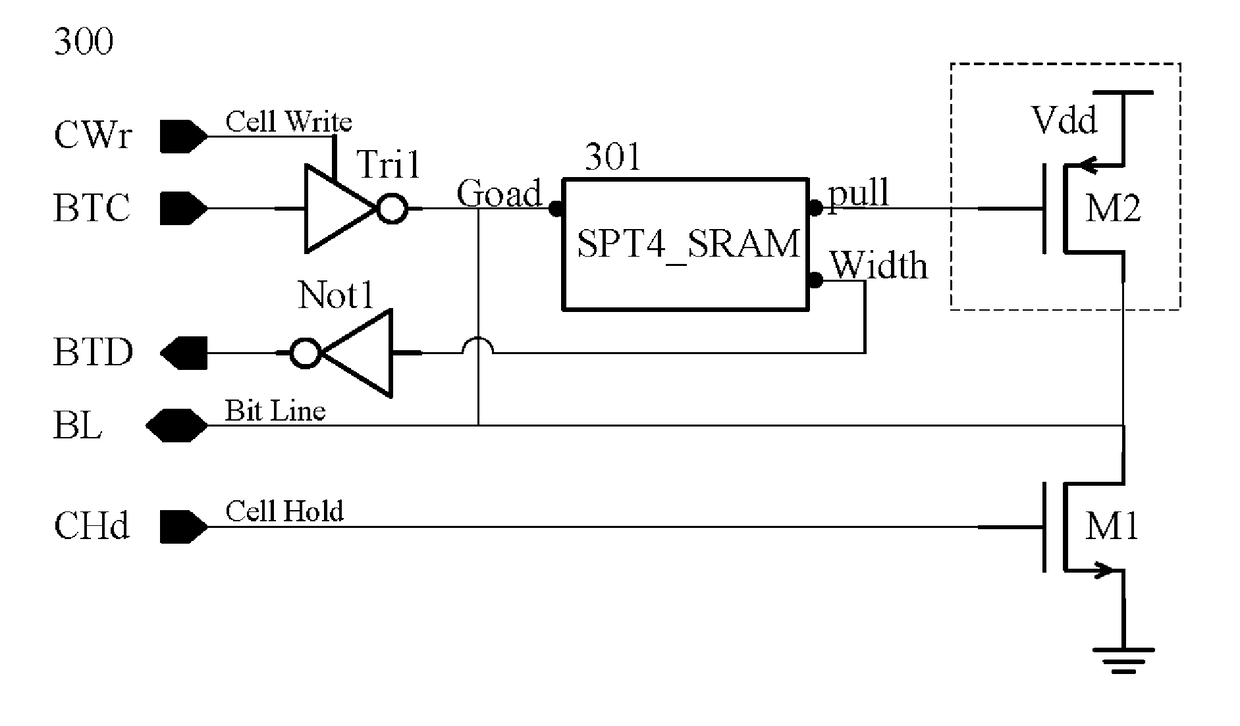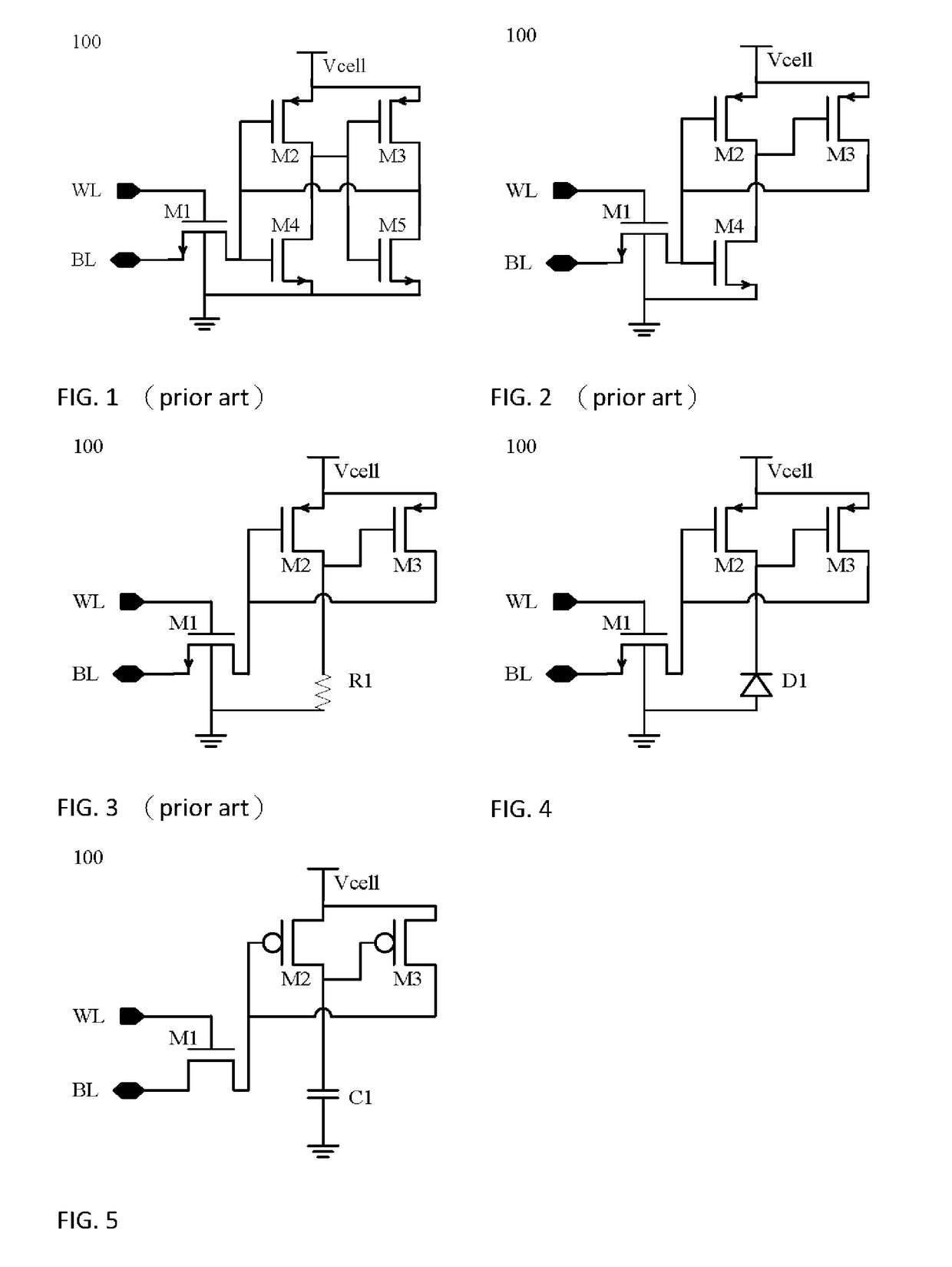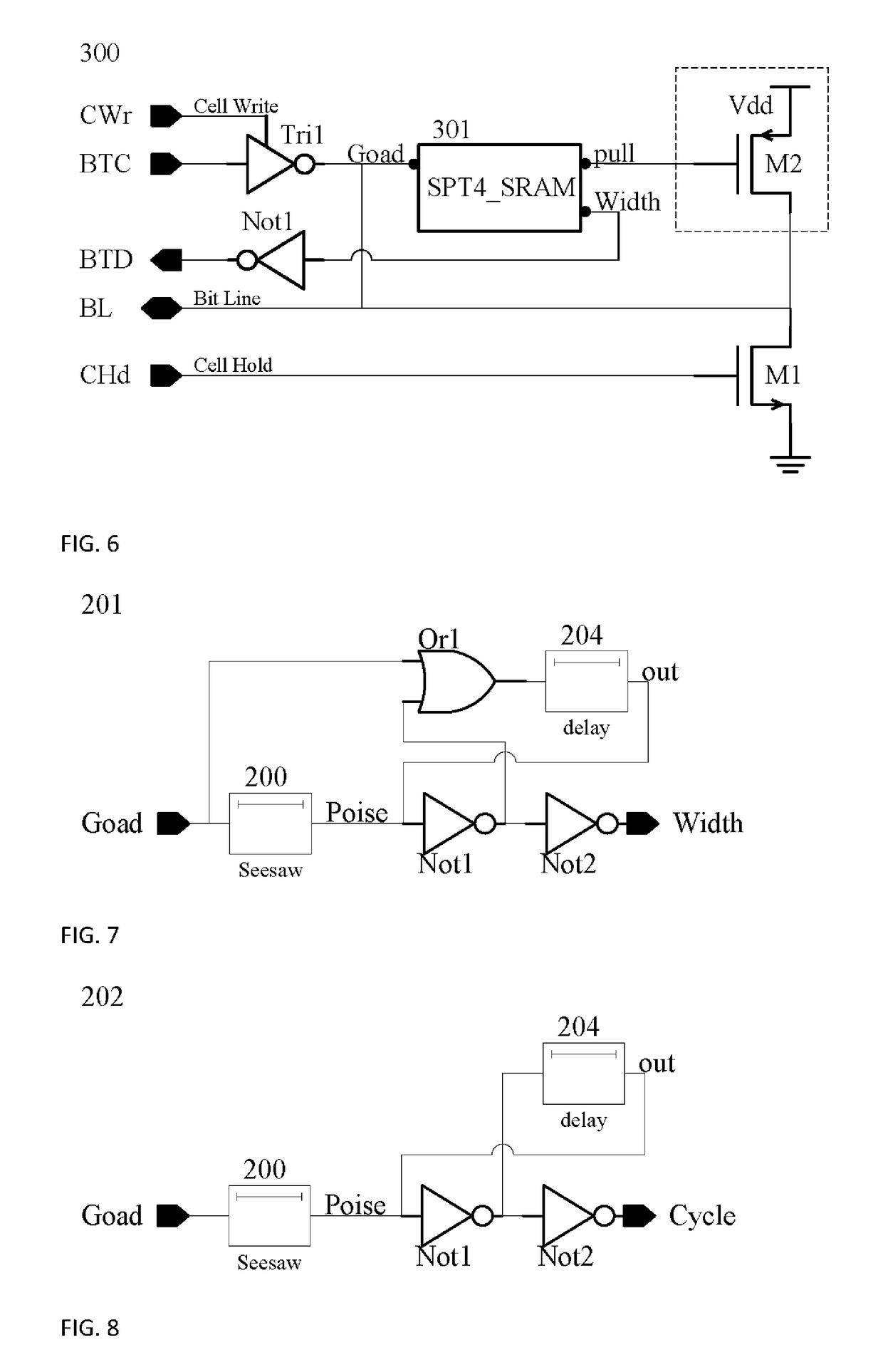Random-Access Memory and Associated Circuit, Method and System
- Summary
- Abstract
- Description
- Claims
- Application Information
AI Technical Summary
Benefits of technology
Problems solved by technology
Method used
Image
Examples
first embodiment
[0053]the present invention: Refer to FIG. 4, an SRAM cell 100 is consisting of three transistors and one diode under transistor-level design, which will be stated as “3T1D SARM cell” in the following. In FIG. 4, M1 to M3 are a MOSFET respectively stated as first to third transistor, wherein M1 is an NMOS while M2 and M3 are a PMOS, and D1 is a diode comprising an anode and a cathode. The anode is called a first connective point and the cathode is called a second connective point. The other nodes are similar with those in FIG. 1-FIG. 3.
[0054]The 3T1D SRAM cell 100 comprises a data transmission node, a transmission control node, a cell power terminal point, a ground terminal point, a first transistor, a second transistor, a third transistor, and a first diode.
[0055]The wiring net of said first transistor is described as follows: the source terminal couples to said data transmission node; the gate terminal couples to said transmission control node; the drain terminal connects to gate ...
second embodiment
[0061]the present invention: refer to FIG. 5, an SRAM cell 100 is consisting of three transistors and one capacitor under transistor-level design, which will be stated as “3T1C SRAM cell” in the following. Please note that this embodiment will be easier to implemented by Silicon-On-Insulator (SOI) process technology, and the produced transistor has no bulk. In FIG. 5, M1 to M3 are a MOSFET respectively stated as first to third transistor, wherein M1 is an NMOS while M2 and M3 are a PMOS, and C1 is a capacitor comprising a first connective point and a second connective point. The other nodes are similar with those in FIG. 1-FIG. 4.
[0062]The 3T1C SRAM cell comprises a data transmission node, a transmission control node, a cell power terminal point, a ground terminal point, a first transistor, a second transistor, a third transistor, and a first capacitor. The wiring net can be referred to aforementioned 3T1D SRAM cell 100, the detailed description is omitted here.
[0063]The 3T1C SRAM c...
third embodiment
[0066]the present invention: refer to FIG. 6, which is an exemplary circuit diagram, wherein the Cell Access and Hold 300 (CAH 300) is a circuit diagram combining transistor-level design, gate-level design and function blocks. M1 and M2 are a MOSFET respectively stated as first and second transistor, wherein M1 is NMOS while M2 is PMOS. In FIG. 6, Tri1 is tri-state gate; Not1 is NOT gate.
[0067]SPT_SRAM 301 is a function block diagram, arranged to detect BL. When BL is slightly increased to high voltage from a relatively low voltage, a rail-to-rail high voltage is quickly outputted. This will be discussed in the following paragraphs. In FIG. 6, “Goad” is a first input connective point, “Width” is a first output connective point, and “pull” is a second output connective point.
[0068]An input node: Cell Write, hereinafter “CWr”, is a control node arranged to start function of cell write, and change storage status of aforementioned memory element.
[0069]An input node: Cell Hold, hereafter...
PUM
 Login to View More
Login to View More Abstract
Description
Claims
Application Information
 Login to View More
Login to View More - R&D
- Intellectual Property
- Life Sciences
- Materials
- Tech Scout
- Unparalleled Data Quality
- Higher Quality Content
- 60% Fewer Hallucinations
Browse by: Latest US Patents, China's latest patents, Technical Efficacy Thesaurus, Application Domain, Technology Topic, Popular Technical Reports.
© 2025 PatSnap. All rights reserved.Legal|Privacy policy|Modern Slavery Act Transparency Statement|Sitemap|About US| Contact US: help@patsnap.com



